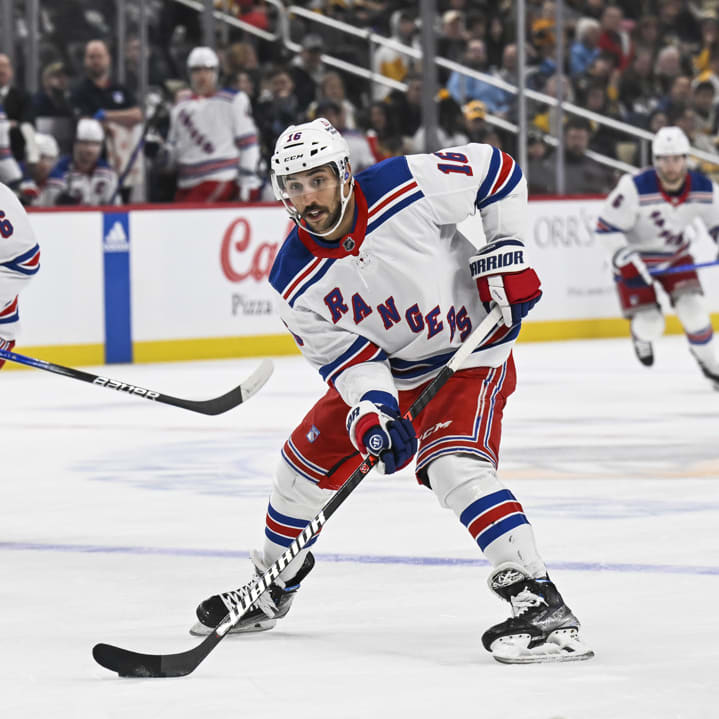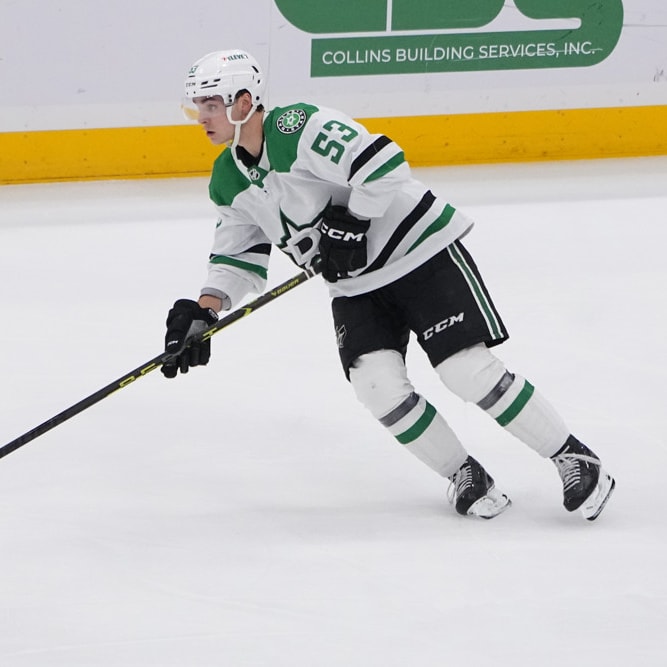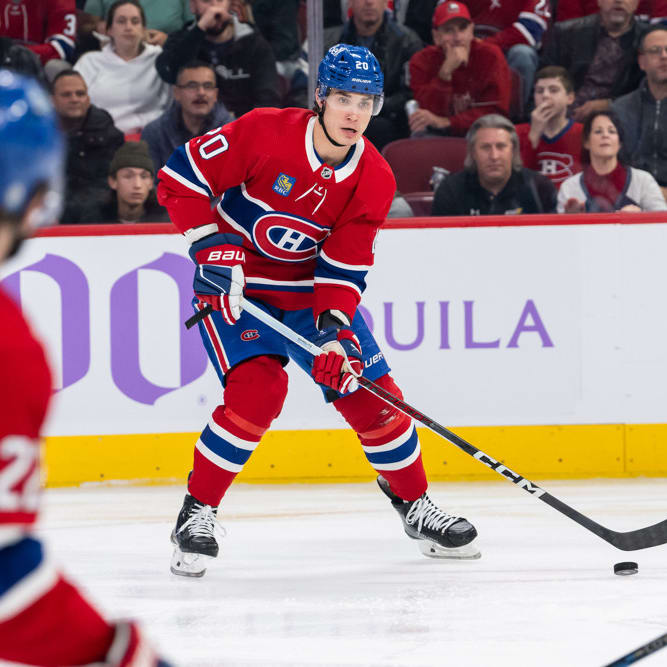This article is part of our Cap Compliance series.
While the current season remains on hiatus, there is no time like the present to start looking ahead to next year. Over the next several weeks, we'll take a look at the cap situation for all 31 NHL clubs, including restricted free agents, unrestricted free agents and even potential buyouts. Then, we'll play a little armchair General Manager by providing our recommendations for how we would approach the upcoming 2020-21 campaign if we were running the club.
In our most recent Twitter poll, the  Edmonton Oilers took first place and will start off week four.
Edmonton Oilers took first place and will start off week four.
2020-21 Cap Situation
The Oilers currently have 11 forwards, five defensemen and one goaltender under contract for next season at a price tag of $66,767,832 and will also be on the hook for $750,000 in retained salary for Milan Lucic and buyouts for Benoit Pouliot and Andrej Sekera totaling $3,833,333. Assuming a flat cap of $81.5 million, this leaves the club with $10,148,835 in cap space and six spots under the 23-man roster to fill.
Restricted Free Agents
Andreas Athanasiou ($3 million) Matt Benning ($1.9 million) Ethan Bear ($720,000) Ryan Mantha ($925,000)
AJ Scholz: At this point, it seems Mantha may be headed toward retirement due to his eye injury and ensuing vision problems. The team could decide to hand Bear a qualifying offer equal to one-year, $735,000 but might be better suited to give him a pay bump and a one-way deal in the neighborhood of $900,000 AAV for two seasons. Injuries in mid-November to mid-January saw Benning limited to a mere 43 contests this season. Even when healthy, the 25-year-old isn't exactly an offensive powerhouse, considering he's topped the 20-point mark just once in his career. A two-year, $4.2 million contract would be similar to the deal inked by Jamie Oleksiak in July of 2018 and would represent a modest pay increase for Benning. Signing Athanasiou is going to be a battle for general manager Ken Holland, though one he has been through before when both were with the Red Wings. The winger will point to 2018-19 when he racked up 30-goals and 54 points in 76 contests, while Edmonton will no doubt look at this past year when he managed just 26 points in 55 outings. I'm guessing the two sides will look for another 2-3 year bridge deal that includes an uptick in AAV. In the end, a two-year, $8.5 million contract could see the two sides avoid a protracted offseason, especially with a depressed free agency market.
Kyle Riley: As AJ mentioned, Mantha hasn't played in a professional match since 2017-18 due to several serious health issues and he has yet to make his NHL debut, so if he is able to land another contract, it almost certainly won't be with the Oilers. Bear has played extremely well during his first full NHL campaign, notching five goals, 21 points and a minus-4 rating while averaging nearly 22 minutes of ice time per contest in 71 appearances. He's already cemented himself as a top-four defenseman for the Oilers as a rookie, so the team would be wise to get him locked up long term now. It's certainly a far riskier move than taking the standard approach of signing a young, relatively unproven player to a bridge deal, but a six-year, $27 million contract could look like an absolute steal for Edmonton in a few seasons. Matt Benning has been a healthy scratch at times this year and head coach Dave Tippett clearly doesn't trust him, as he's only averaged just over 13 minutes of ice time per game in 43 appearances this season, so there's really no reason for the team to re-sign him. Evan Bouchard will likely make the jump to the NHL in 2020-21, which only makes the decision to let Benning walk that much easier. The Oilers included two second-round picks in the package they sent to Detroit to acquire Athanasiou at the trade deadline, so there's no way they're going to let him hit the open market. I do, however, see them taking a page out of the Red Wings' playbook by offering him another short-term, prove-it deal. I actually think a $4.25 million AAV would be a bit of an overspend for the speedster. A two-year, $7 million contract should get it done.
Unrestricted Free Agents
Riley Sheahan ($900,000) Tyler Ennis ($800,000) Patrick Russell ($700,000) Mike Green ($2.7 million) Mike Smith ($2 million) Brandon Manning ($2.25 million) Markus Granlund ($1.3 million)
AJ Scholz: Manning has been buried in the minors for parts of this season, so unless he's willing to accept a two-way deal that would prevent the club from eating his cap hit while he plays for Bakersfield, it doesn't make a lot of sense to bring him back into the fold. Granlund will be playing in the KHL in 2020-21, so he wouldn't be an option even if the team wanted to keep him around. Russell was playing on a two-way deal this season. If he is willing to sign another one-year, two-way contract worth $800,000, then the Oilers should consider keeping him, but otherwise they should let him walk. With Ethan Bear and Caleb Jones making the jump to the NHL, the club can let Mike Green leave in free agency and move to a younger, cheaper blue line. In the case of Sheahan, he has turned himself into a valuable bottom-six center who is a mainstay on the penalty kill and he doesn't break the bank in terms of a cap hit. He's just 28 years old, so perhaps the team would be willing to extend him some term and give him a three-year, $3.3 million contract. Unfortunately, this doesn't leave much room for Ennis and Smith. If Smith wants to continue playing and would accept another one-year, $2-2.25 million deal, then it would be logical to bring him back to keep grooming Mikko Koskinen, however, the team would need to get creative to make this work. It might have to settle for re-signing Shane Starrett and letting him serve as the No. 2 option. Similarly, in order to keep Ennis, Edmonton would probably need to take him over Sheahan and that seems like a poor choice when you consider the two players' skill sets.
Kyle Riley: Manning has been with Bakersfield for the majority of the season. He's simply not an NHL-caliber defenseman, so the Oilers shouldn't think twice about letting him hit the market. As AJ mentioned, Granlund will be suiting up for Salavat Yulaev of the KHL next year, so that situation has already resolved itself. Russell has frequently been a healthy scratch this season, so if he's not willing to take a two-way deal with a slight pay bump ($750,000), Edmonton should let him walk. As I mentioned earlier, Evan Bouchard should be a full-time NHLer next year, and with the Bear and Athanasiou deals I outlined in section one, the Oilers simply wouldn't have the space to sign Green. Either way, he's an aging defenseman that's dealt with injuries over the past few campaigns, so Edmonton should just chalk him up as a true rental and hope that he helps them in the playoffs this summer before heading elsewhere in free agency. Along the same lines, the Oilers wouldn't be able to afford to keep Sheahan or Ennis around with Bear and Athanasiou re-signed, so in that scenario, they'd be headed elsewhere. Smith has been decent as Edmonton's No. 2 netminder, but he's 38 years old and re-signing him would put the Oilers right up against the cap. If he's willing to sign a one-year, $1.25 million extension to remain with a contender, the Oilers should jump on it. If not, they should look for a similarly priced vet in free agency.
Minor-League Free Agents *Who appeared in an NHL game in 2019-20
Tomas Jurco ($750,000) William Lagesson ($741,666)
AJ Scholz: Between the AHL and NHL, Jurco played in just 20 games this season and while his numbers in the minors were impressive (seven points in eight appearances), the winger likely hasn't done enough to convince the organization to keep him on beyond another one-year, two-way deal with a minimal cap hit. Lagesson offers a little more intrigue in terms of long-term upside and the Oilers can keep him around with a qualifying offer equal to one-year, $735,000.
Kyle Riley: Jurco simply isn't an NHLer, so if he's not willing to take a cheap, two-way deal, he'll be gone. Lagesson offers value as organizational depth at defense, but he hasn't appeared in an NHL contest since 2018-19 and hasn't been particularly impressive in the minors, so his QO should get it done.
Final Thoughts
AJ Scholz: Looking at this defensive complement, it seems like Patrick Russel will be the sixth blueliner at best, though he could find himself as a healthy scratch from time-to-time. $4 million is a lot of money to shell out for a guy watching from the press box. A buyout would net the team $1 million in cap space next year and give them a little more flexibility. The extra spot on the 23-man roster would likely go to Evan Bouchard and would bolster the development of the Oilers' young d-core. While they are worth every penny, this team has $21 million a year committed to Connor McDavid and Leon Draisaitl through 2024-25, which will force Ken Holland to get creative with building out the rest of his roster.
Kyle Riley: The plan I outlined above would put the Oilers right up against the camp, but it would also enable Edmonton to field a true contender of a roster next year after extending its key pieces and shedding its relatively unnecessary/overpaid depth. The team is already well built and the Oilers have a few youngsters that are close to being ready to make the jump to the NHL, so losing players like Benning, Ennis and Sheahan will hardly hurt their chances heading into the 2020-21 campaign.












